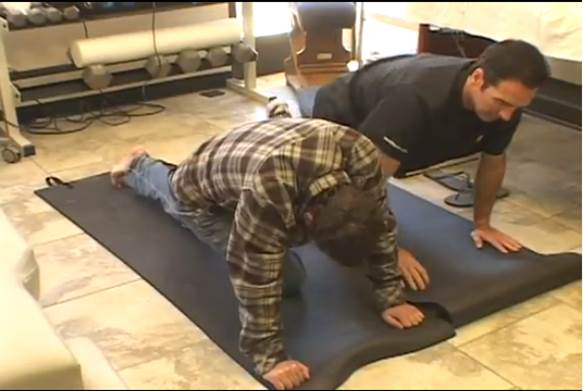Rehabilitative Exercises
The purpose of rehabilitation is to restore some or all of the patient’s physical, sensory, and mental capabilities that were lost due to injury, illness, or disease. Rehabilitation includes assisting the patient to compensate for deficits that cannot be reversed medically. It is prescribed after many types of injury, illness, or disease, including amputations, arthritis, cancer, cardiac disease, neurological problems, orthopedic injuries, spinal cord injuries, stroke, and traumatic brain injuries. The Institute of Medicine has estimated that as many as 14% of all Americans may be disabled at any given time.
A proper and adequate rehabilitation program can reverse many disabling conditions or can help patients cope with deficits that cannot be reversed by medical care. Rehabilitation addresses the patient’s physical, psychological, and environmental needs. It is achieved by restoring the patient’s physical functions and/or modifying the patient’s physical and social environment. The main types of rehabilitation are physical, occupational, and speech therapy.
Each rehabilitation program is tailored to the individual patient’s needs and can include one or more types of therapy. The patient’s physician usually coordinates the efforts of the rehabilitation team, which can include physical, occupational, speech, or other therapists; nurses; engineers; physiatrists (physical medicine); psychologists; orthotists (makes devices such as braces to straighten out curved or poorly shaped bones); prosthetists (a therapist who makes artificial limbs or protheses); and vocational counselors. Family members are often actively involved in the patient’s rehabilitation program.

Stretching and Strengthening the muscles above and below the site of an injury, along with improved Biomechanics are the key to long lasting results.
Exercise Therapy

Exercise Therapy – spinal strengthening
Exercise therapy helps the patient restore the use of muscles, bones, and the nervous system through the use of heat, cold, massage, whirlpool baths, ultrasound, exercise, and other techniques. It seeks to relieve pain, improve strength and mobility, and train the patient to perform important everyday tasks. Exercise therapy may be prescribed to rehabilitate a patient after amputations, arthritis, burns, cancer, cardiac disease, cervical and lumbar dysfunction, neurological problems, orthopedic injuries, pulmonary disease, spinal cord injuries, stroke, traumatic brain injuries, and other injuries/illnesses. The duration of the exercise therapy program varies depending on the injury/illness being treated and the patient’s response to therapy.
Exercise is the most widely used and best known type of therapy. Depending on the patient’s condition, exercises may be performed by the patient alone or with the therapist’s help, or with the therapist moving the patient’s limbs. Exercise equipment for exercise therapy could include an exercise table or mat, a stationary bicycle, walking aids, a wheelchair, practice stairs, parallel bars, and pulleys and weights.
Heat treatment, applied with hot-water compresses, infrared lamps, short-wave radiation, high frequency electrical current, ultrasound, paraffin wax, or warm baths, is used to stimulate the patient’s circulation, relax muscles, and relieve pain. Cold treatment is applied with ice packs or cold-water soaking. Soaking in a whirlpool can ease muscle spasm pain and help strengthen movements. Massage aids circulation, helps the patient relax, relieves pain and muscle spasms, and reduces swelling. Very low strength electrical currents applied through the skin stimulate muscles and make them contract, helping paralyzed or weakened muscles respond again.
Heat treatment, applied with hot-water compresses, infrared lamps, short-wave radiation, high frequency electrical current, ultrasound, paraffin wax, or warm baths, is used to stimulate the patient’s circulation, relax muscles, and relieve pain. Cold treatment is applied with ice packs or cold-water soaking. Soaking in a whirlpool can ease muscle spasm pain and help strengthen movements. Massage aids circulation, helps the patient relax, relieves pain and muscle spasms, and reduces swelling. Very low strength electrical currents applied through the skin stimulate muscles and make them contract, helping paralyzed or weakened muscles respond again.
